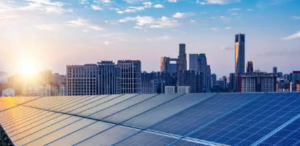Adelaide Solar: Adelaide Solar Pool Heating, Anyone?
Backyard swimming pools are either loved or hated by families. If yours falls into the former category and you’re looking for ways to extend your swim season, a solar pool heater is worth considering.
 An Adelaide solar pool heating system consists of your existing pool pump and filter, along with a solar collector(s) mounted on your roof or in a convenient spot nearby. The system is controlled by a flow control valve that’s either automatic or manual.
An Adelaide solar pool heating system consists of your existing pool pump and filter, along with a solar collector(s) mounted on your roof or in a convenient spot nearby. The system is controlled by a flow control valve that’s either automatic or manual.
How Solar Pool Heaters Work
Solar pool heating is the cleanest, most environmentally friendly way to heat your swimming pool. A traditional pool heater uses power and gas to run, while a solar system harnesses the sun’s free energy. The result is lower utility bills, extended swim seasons, and the satisfaction of knowing you’re protecting the planet for future generations.
Getting the most out of your solar pool heater starts with choosing the right size system for your pool. A general rule is that the system should cover about half of your pool’s surface area. However, other factors can affect this, including the climate where you live, how long you keep your pool open each year, and your goals for recouping your investment.
Once you know how big a system to buy, your installer can help you select the most efficient equipment for your needs and budget. A few key considerations include the number of heating plates, whether to go with glazed or unglazed collectors and the pump horsepower. Glazed collectors are more durable and longer-lasting, but they can be more expensive than unglazed options.
The amount of sunlight your solar panel array receives also plays a critical role in its efficiency. A good rule of thumb is to aim the collectors toward the true south, although there’s some wiggle room depending on your location and local flora.
Solar Collectors
An Adelaide solar pool heating is a combination of several components, including a solar collector (panels) installed on your roof or near the southern edge of your pool, a filter for your existing pool, a solar pump that connects to the new pipes that lead to the collector, and a control box with either a manual 3-way valve or an automated sensor. The sensor monitors the temperature of your pool water, and when the water reaches the desired warm-up level, it is automatically diverted to the solar collector by the flow control valve, which then returns the warm water to your pool.
The average solar collector can produce about 1,000 BTUs per day. It is possible to upgrade to a more efficient collector that will increase your system’s thermal performance rating.
Keep in mind that this method of heating does not work as well during the cooler months and early morning hours when sunlight is less available. For this reason, you may find it necessary to purchase a backup system to keep your pool at the warm swimming temperature you want to enjoy. It is especially true if you live in a climate that does not experience many sunny, warm days during the fall and spring or if you are planning on using your pool year-round. Your qualified solar contractor will be able to recommend the proper size system for your unique needs.
Plumbing
The solar system is installed on your roof, and the plumbing runs from the pool pump up to the rooftop, where it passes through the solar collectors. A simple way to think of this is that the pump is sucking water through a filter, then up to the solar collectors to be heated and back down again.
There are several different configurations of Adelaide solar pool heating, and the type chosen will depend on your location, the size of the roof and the amount of sunlight it gets, the current pool water temperature and the desired target temperature. For instance, solid-body heating plates have no open space between riser tubes and are a great option for windy locations because the wind cannot pull heat away through convection.


